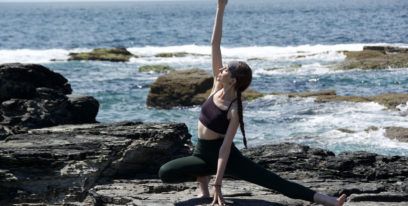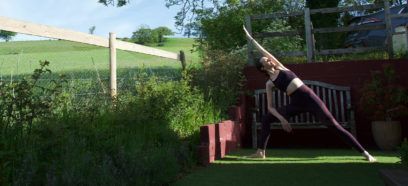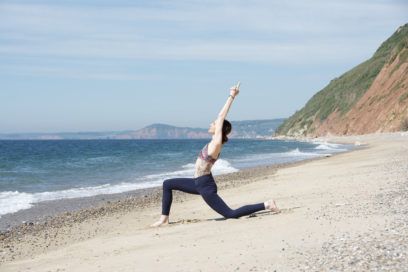Yoga for Healthy Digestion
A harmonious relationship between our body and mind is essential for overall well-being. When it comes to our physical health, a significant component is digestion. A healthy digestive system is key to nutrient absorption, energy production, and overall vitality. One holistic and time-tested approach to promote good digestion is through the practice of yoga. Let’s explore how yoga can benefit your digestive system and highlight some specific poses and practices to enhance digestive health and alleviate IBS symptoms.
The Mind-Body Connection
Before diving into yoga poses, it’s important to recognize the powerful connection between the mind and the digestive system. Stress and anxiety can wreak havoc on digestion, leading to issues like indigestion, bloating, and even irritable bowel syndrome (IBS). Yoga addresses this connection by promoting relaxation and reducing stress, which can indirectly support healthy digestion.
Breath Awareness
Pranayama, or yogic breathing techniques, are integral to yoga practice. Deep, mindful breathing helps relax the nervous system and stimulate the parasympathetic response, often referred to as the “rest and digest” mode. Incorporating pranayama exercises like diaphragmatic breathing, kapalabhati, and alternate nostril breathing can help reduce stress and improve digestion.
Yoga Poses for Digestion:
- Apanasana (Knees-to-Chest Pose):
- Lie on your back and hug your knees to your chest.
- Gently rock side to side to massage your lower abdomen.
- This pose can help relieve gas and bloating.
- Pavanamuktasana (Wind-Relieving Pose):
- Lie on your back and bring one knee toward your chest while extending the other leg.
- Hug the knee to your chest and hold for a few breaths, then switch sides.
- This pose aids in releasing trapped gas and improving peristalsis.
- Paschimottanasana (Seated Forward Bend):
- Sit with your legs extended in front of you and fold forward from your hips.
- This pose stimulates the abdominal organs, aiding in digestion.
- Bhujangasana (Cobra Pose):
- Lie on your stomach with your hands under your shoulders.
- Inhale, lift your chest off the ground, and look up.
- Cobra pose can improve digestion by gently compressing the abdominal region.
- Ardha Matsyendrasana (Half Lord of the Fishes Pose):
- Sit with one leg extended and the other leg bent over the extended leg.
- Twist your torso and look over your shoulder.
- This pose aids in detoxification and can relieve digestive discomfort.
- Supta Vajrasana (Reclined Thunderbolt Pose):
- Kneel with your buttocks resting on your heels and lean back, placing your elbows on the floor.
- This pose can help with indigestion and bloating.
Yoga offers a holistic approach to maintaining healthy digestion by addressing both the physical and mental aspects of this essential bodily function. By incorporating breath awareness, pranayama techniques, and specific yoga poses into your routine, you can promote relaxation, reduce stress, and improve digestive health. Remember to practice yoga with mindfulness and consistency, and consult a yoga instructor or healthcare professional if you have specific digestive concerns or medical conditions.
Yoga for IBS Class
Time to relax and twist it out in this 20 minute hatha class. This is an all-levels sequence focusing on promoting healthy digestion. Yoga has been shown to have significant benefits in relieving IBS and other chronic digestive disorder symptoms. We’ll be moving through many asanas involving twisting from our spine and opening through the hips promoting an overall release & refresh! See more yoga videos.




